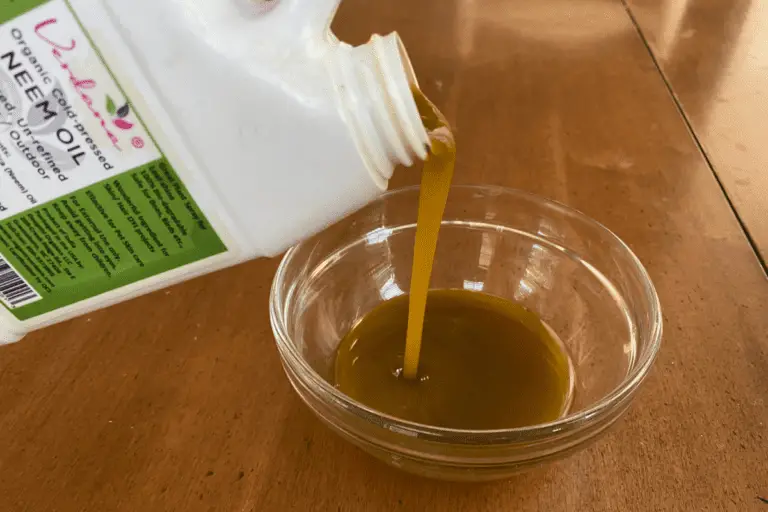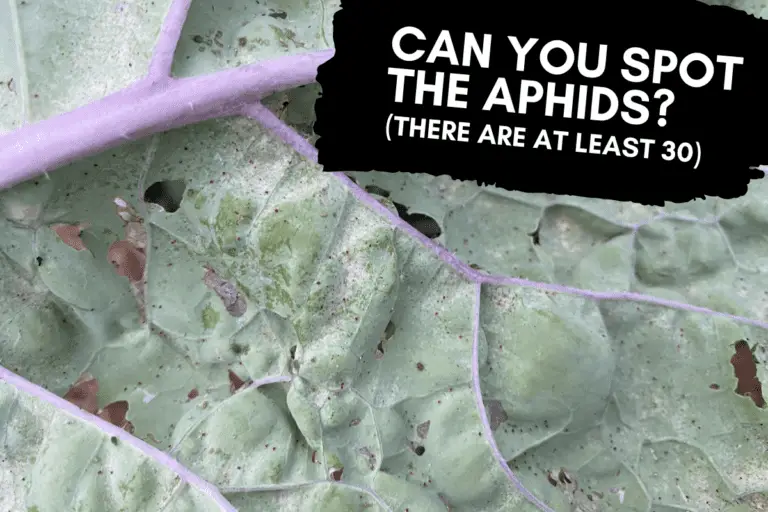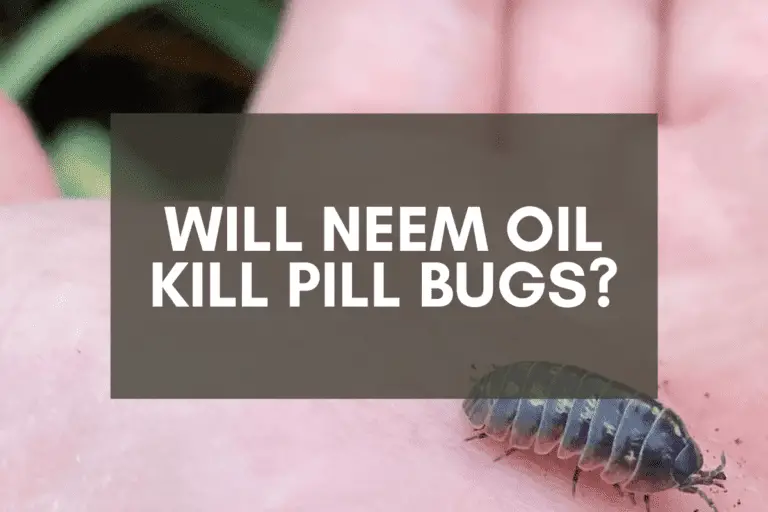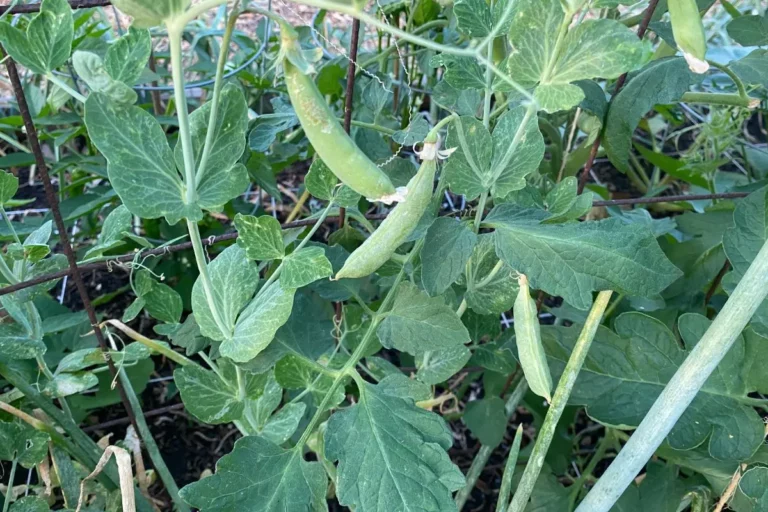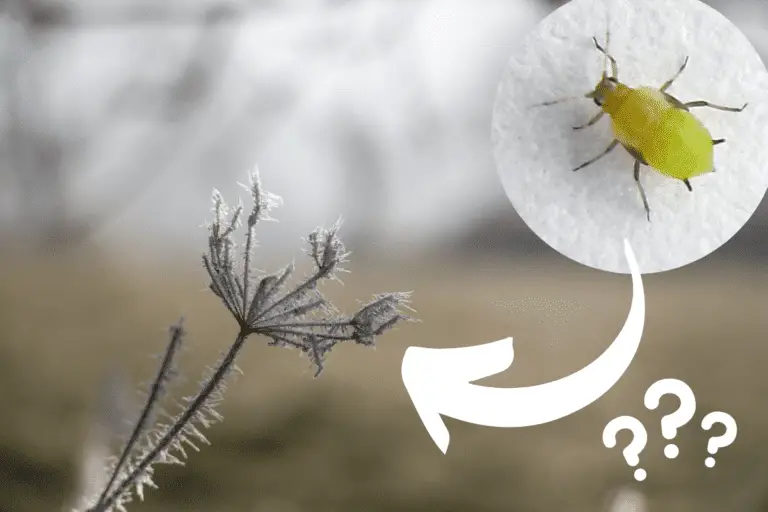Are Aphids Green? How to Recognize and Kill Green Aphids
I’ve written at length about the arrival of black aphids in my garden last summer—and the kinds of damage they did to my okra plants—but I noticed something interesting recently.
This year, I decided to grow a red okra variety (called Red Velvet), and as I was harvesting some of the red pods, I saw several tiny, vibrantly green bugs climbing across an okra pod. Although I’d never seen these particular bugs before, their size made me think of the black aphids I’d previously seen, and I wondered if other gardeners out there had ever seen such bugs and thought, “Are aphids green?”
Aphids come in all kinds of colors—from black, brown, and red to yellow, purple, and pink—but green is one of the most common aphid colors. Green aphids can be found worldwide, and many green aphid species are known to spread disease and cause damage to a wide variety of plants.
Here’s a list of the more troublesome green aphid species for those of us who like to garden:
| Kind | Color | Size | Diseases Transmitted |
|---|---|---|---|
| Asparagus Aphid | Gray Green | 1.6 – 2 mm | Asparagus Virus I/II Tobacco Streak Virus |
| Blueberry Aphid | Yellow Green | 1 – 2 mm | Blueberry Shoestring Virus Blueberry Scorch Virus |
| Cabbage Aphid | Gray Green | 2 – 2.5 mm | Watermelon Mosaic Virus |
| Corn Leaf Aphid | Blue Green | 1.4 – 1.8 mm | Barley Yellow Dwarf Virus |
| Currant-Lettuce Aphid | Shiny Green | 1.3 – 2.7 mm | Lettuce Necrotic Leaf Curl Virus |
| Foxglove Aphid | Yellow Green | 1.8 – 3 mm | Lettuce Mosaic Virus |
| Green Peach Aphid | Yellow Green | 1.8 – 2.1 mm | 100+ Viruses |
| Melon-Cotton Aphid | Pale/Dark Green | 1 – 2 mm | Cucumber, Watermelon, & Zucchini Yellow Mosaic Viruses |
| Pea Aphid | Pale Green/Red | 2.2 – 5 mm | 30+ Viruses |
| Potato Aphid | Pale Green/Red | 2 – 4 mm | Potato Leaf Roll Virus, Potato Virus Y |
| Turnip Aphid | Pale Green | 1.6 – 2.2 mm | Beet Western Yellows Virus Cauliflower & Turnip Mosaic Viruses |
Some of these aphids–such as the asparagus, blueberry, and corn leaf aphids–are known for inhabiting and damaging one crop in particular. But other aphid species are much more destructive since they feed on various crops and can transmit numerous viruses between plants.
For example, cabbage aphids will attack brassica plants (especially broccoli, brussels sprouts, cabbage, and cauliflower), but they’ve also been known to damage lettuce, rutabaga, and turnips. Foxglove aphids are particularly drawn to lettuce, celery, and 90+ types of ornamental plants, and much like cabbage aphids, turnip aphids also feed on numerous brassicas.
But of all the green aphid varieties, the green peach aphid might be one of the worst. On the one hand, it has a voracious appetite and is willing to feed on all kinds of plant varieties. On the other hand, the green peach aphid is particularly suited to spreading disease. According to one team of researchers, green peach aphids have the ability to transmit over 100 different plant diseases and can do so quickly as they reproduce and extend their reach from one plant to the next.
Where Do Green Aphids Come From?
To understand why aphids have shown up in your garden, you need to know the basics of the aphid life cycle.
In the spring, aphids hatch from overwintered eggs. Female aphids reach maturity in 1-2 weeks and reproduce asexually throughout spring and summer, giving birth to 50-80 nymphs. Late in the year, aphids produce winged nymphs, which travel to nearby plants to reproduce and lay eggs.
If you notice aphids in your garden in early to late spring, what you’re seeing is the product of aphid eggs that were laid late last year and overwintered on your property.
Honestly, the process is kind of amazing–and also a bit horrifying if your goal is to keep aphids out of your garden–so let’s take a step-by-step look at where aphids come from:
Spring and Summer
- Aphids hatch from overwintered eggs and begin their search for food. Aphid nymphs typically take 1-2 weeks to reach maturity and begin reproducing.
- After they reach maturity, female aphids will reproduce asexually throughout spring and summer, giving live birth to 1-2 wingless aphid nymphs per day.
- Female nymphs are born pregnant and will give birth to more already-pregnant female nymphs until later in the year.
Summer
- By the time summer arrives, aphids may have already gone through 10 generations, increasing the overall aphid population exponentially.
- As aphid numbers increase, aphids begin clustering around food sources and food becomes scarcer.
- Female aphids are able to recognize environmental stressors and begin giving birth to winged male and female nymphs.
- Winged aphids travel to nearby plants, and the winged female aphids continue giving birth to nymphs—some wingless, others winged, depending on environmental conditions and the time of year.
Fall and Winter
- Winged aphids, both male and female, that have traveled to new plants begin reproducing sexually as they prepare for winter.
- These reproductive activities result in the development of eggs, not live nymphs.
- Female aphids deposit their eggs on plants, which allows the aphid population to survive the winter months and reemerge come spring.
Individually, aphids aren’t very hardy and can be killed easily, but they reproduce quickly, they can sense environmental changes, and they can effortlessly migrate from place to place. Overall, they’re a pretty impressive bug, although one I don’t wish to ever see among my plants.
If, however, you do see aphids among your plants, you need to act quickly. If you ignore the problem, you’ll give them the time they need to reproduce, give birth to winged nymphs, travel to other plants, and lay eggs that’ll overwinter in your garden.
Are Green Aphids Bad?
When I was a beginning gardener, I didn’t give much thought to aphids. They’d show up now and then, and I’d simply spray them with a little water and continue about my business.
But as I learned about aphids, I started to see them as a more serious threat.
Green aphids can damage a wide range of plants, including practically all cucurbit and brassica varieties but also asparagus, beans, blueberries, celery, corn, eggplant, lettuce, okra, peppers, potatoes, tomatoes, and turnips. They also feed on trees, flowers, shrubs, and various ornamental plants.
And here’s the thing about aphids: You might not see the damage they’ve caused until it’s too late to do anything about it.
The visible damage that aphids do to plants is typically pretty minor (unless you’ve got a larger infestation on your property), but aphids are major sources of disease transmission.
Simply put, they can spread hundreds of plant diseases with little to no effort. Once they begin sucking sap from the plant, they initiate the disease transmission process since plant diseases are transmitted once they attack plants with their piercing mouthparts.
And just like that, your previously healthy plants might be sent on a downward spiral.
In order to avoid both aphid damage and disease transmission, let’s take a look at ways to get rid of green aphids before they gain a foothold in your garden.
How Do You Get Rid of Green Aphids?
Now that you know more about what green aphids look like, how they reproduce and spread, and what kinds of damage they cause, let’s examine a few tried-and-true ways to get rid of them.
The simplest way to get rid of a minor green aphid infestation is to douse or spray the infested plant with water, which will wash off and kill most aphids. For more serious infestations, soapy water or neem oil sprays are typically most effective.
In my article on identifying and killing black aphids, I outlined 6 effective methods for handling aphid infestations, which I delve into further in an article on spotting and getting rid of white aphids.
In this article, I want to provide detailed information about my favorite 3 methods. Let’s look at each, starting with the simplest:
1. Water
What’s interesting about aphids, beyond the astounding ways that they reproduce and migrate, is how fragile they actually are. This is where water comes in handy.
If you’ve got smaller plants–or potted plants that you haven’t yet put in the ground–I recommend giving them a water bath of some kind. You can even take hardy houseplants into the shower with you, provided you’ve got a localized infestation on a single plant.
But for those of you who, like me, don’t want to drag your container plants into the shower, just follow these instructions:
- Fill a bucket or container with water and have a large cup handy.
- Tip your plant to the side, preferably over a concrete walkway or driveway.
- Pour cup after cup of water over your plant, enough to thoroughly wash both the tops and undersides of all foliage. Do your best to wash the aphids onto the concrete so that they’re more likely to die.
For larger plants, the method above won’t work. What you’ve got to do instead is to use a hose, either with or without a nozzle, and spray the plant thoroughly. Your goal is to wash the aphids away, so I’d suggest using as much water pressure as you can safely use without harming the plant.
The goal is not merely to blow the aphids off the plant. Ideally, you’d like to kill them in the process so they can’t regroup or reproduce.
Water will work great for small-ish infestations, but if you’re got a larger aphid problem on your hands, you’ll want to use one of the more aggressive methods listed below.
2. Soapy Water Spray
This is an incredibly easy solution for your aphid problems. All you need to do is to mix water and soap in a 1- or 2-gallon sprayer and spray your plants down thoroughly.
Here are my favorite soaps to use when making a soapy water spray. Some people claim that insecticidal soap is best, but honestly, all three of them will work just fine for killing aphids:
- Dr. Bronner’s Peppermint Pure Castile Soap
- Mrs. Meyer’s Clean Day Dish Soap
- Safer Insect Killing Soap
Be sure to mix 5 tablespoons of soap per gallon of water; otherwise, your soapy water spray might be too weak. When mixed properly, the soapy solution will coat soft-bodied garden pests (such as aphids) and cause irreparable damage to their biological systems.
I’ve used this soap with great success to stop spider mite infestations, and it’ll have the same effect on green aphids, both adults and nymphs.
3. Neem Oil Spray
This is another of my favorite, go-to garden pest products. Neem oil is derived from neem trees and their seeds, which produce a chemical compound called azadirachtin. Azadirachtin interrupts bugs’ hormonal processes, either killing the bug outright or hindering its ability to reproduce. This is why neem oil is valued so highly by most organic gardeners.
Another good thing about neem oil: In its concentrated form, it’s relatively cheap. If you’d like to learn about neem oil, check out my complete guide to using neem oil.
But here’s a quick overview of what I do to make a potent neem oil spray:
- Fill a 1- or 2-gallon sprayer with water.
- Add 1 tablespoon of soapy emulsifier per gallon of water. My favorite soap is Dr. Bronner’s Peppermint Pure Castile Soap.
- Add 2 tablespoons of neem oil per gallon of water
- Shake sprayer thoroughly, then spray the tops and undersides of all plant foliage.
Assuming you have the necessary ingredients, it’ll only take you about 5 minutes to prepare a neem oil spray. Just be sure to add the water first. If you add the neem oil and soapy emulsifier first, you might have a mess on your hands once you start adding water to your sprayer.
So that’s my overview of green aphids! If you see green aphids in your garden, don’t delay. Pick one of the three treatment methods listed above and spray your plants thoroughly.
If you ignore the infestation, you not only risk immediate damage to your plants. You also risk disease transmission to other plants in your garden as well as the possibility of extensive egg production, which will lead to an aphid reemergence the following spring.
Special thanks to the folks at Influential Points for providing insights about the lengths of particular aphid species.

